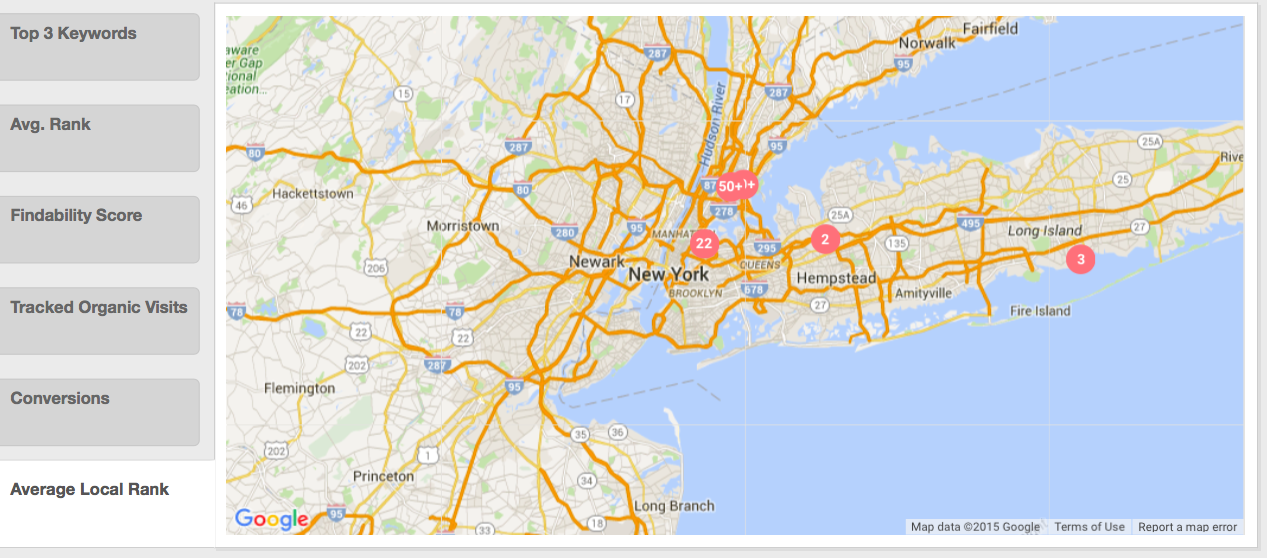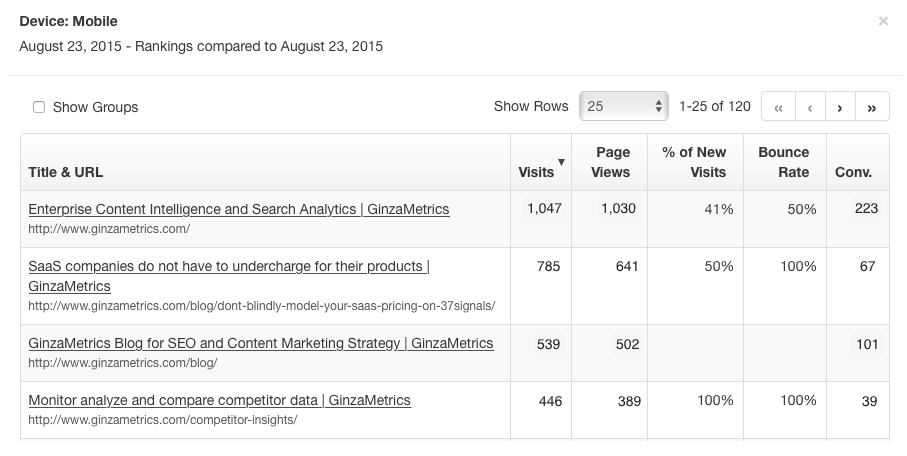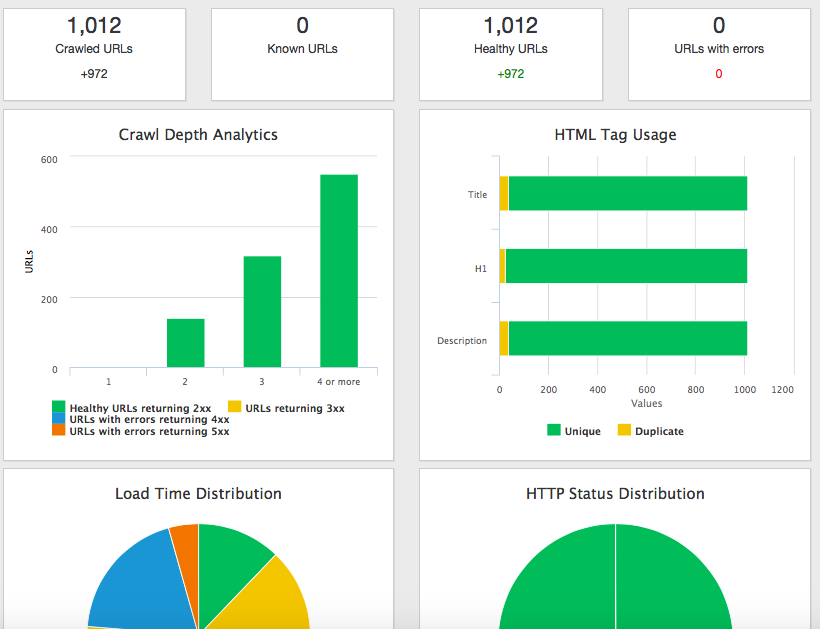The growing popularity of mobile devices is changing the way Google is showing results for search queries. Local SEO is not just about small local businesses anymore. The noisy internet environment and increasing competition is causing brands of all sizes to look at local SEO as a way to improve their findability. In response to recent trends and challenges around the local and mobile search space, we recently announced a suite of integrated local and mobile tools.

I recently interviewed Ray Grieselhuber, Founder and CEO, to talk about the need for local SEO and some strategies to use local search data to identify and serve smaller target niches and improve the bottom line.
Q: How has Pigeon update of 2014 affected the recent emphasis on local?
Ray: Pigeon really reflects Google’s recognition and move towards integrating pretty much everything around local awareness. One of the things that’s increasingly obvious about local in general is that there’s a very strong temporal element to it.
The prevalence of mobile devices being used so heavily in local-related searches means that people are looking for information not just about their location but also about their location right now. They’re trying to figure out what restaurant should I go to? What café shall I go to now? Where can I park right now?
It’s all the obvious use cases that people have talked about for years that are finally becoming a reality on a massive scale. People are in a rush, they’re distracted, they’re trying to get information quickly, and Google is responding to this. So, the Pigeon release was really about integrating all of the local data that they have, all the maps information they have into their search results, and providing much more of a seamless environment between maps, search, local, and the temporal element that I talked about.
Q: How has popularity of mobile technology been the catalyst for the growing interest in local search?
Ray: Mobile devices, smartphones in particular, have really driven the promotion of local and that’s obviously a huge platform at play here. As that part of the industry continues to evolve, we’ll start to see things really move in that direction, too. But Google is obviously very focused on smartphone and tablet usage.

Q: What’s the difference between local listings and local search rankings and why is it important to know how they differ?
Ray: Local listings are for companies that depend on regional traffic. So if you’re running a chain of coffee stores or pizza shops or even if you’re just an individual store, if you’re a local insurance, anything where you depend on local “offline foot traffic” for your business, then you need to be involved in local listings.
Local search results – the local listing will be part of that but it’s a situation where people are going to be looking for or expecting to see results for a very specific chain store in that location. Local listings, because of the amount of data that they have and because there’s this offline component where visitors to these retail locations expect to be able to find high quality results that they can depend on (because they’re going to be going out of their way to go to these spots), depend on quality results. So Google has enforced that requirement by providing better rankings for companies that update their local listings on a regular basis and make sure that their profiles are completed correctly. They give preference to stores that are well reviewed and have all the correct data in place.
Q: Can you address the growing trend of B2B brands and non-regional businesses to rely on local search ranking data to discover how their content is being found?
Ray: Local search listings are kind of the default organic search result within the local context. Local, in this case, doesn’t just mean city level. It means national or state level, as well. If you’re in Pennsylvania versus Wisconsin, when you search for certain things you’re going to get different results. Searchers may be looking for local branches of national chapters, for example. So if you’re living in Trent, Pennsylvania and you type “boy scouts,” there’s a very strong possibility that you’re going to get different results there than you will for that same query performed in Wisconsin or Idaho. It’s basically providing that local context and information around queries that are not necessarily looking for local listings but are much more specific to different regions.
Q: Currently, there are stand-alone tools and expensive add-ons in the market that support both local listing and local search rankings. What are some of the challenges that arise from using these solutions?
Ray: It’s the same type of challenge that you expect with any sort of one-off solution. There are a lot of really good one-off feature-focused tools out there. For certain cases, I would recommend using them – especially if you’re a company that only has to deal with that and don’t have to worry about anything else.
The type of company that we tend to work with has much more sophisticated needs. They need something that’s fully integrated as a platform across lots of different data sources and channels and serves a broad range of roles within the organization, including IT, marketing, and technical SEO.
If you’re a company or an agency that needs a single dashboard and reporting system and you want to try to centralize everything as much as possible, then GinzaMetrics is something I would recommend you look at.
Q: GinzaMetrics wasn’t the first to market with the local search solution. Why did you decide to wait until local could be integrated into the platform?
Ray: There are two reasons. One is we wanted to look at how the market was going to respond. We saw two types of tools out there. One was this one-off local-focused tool and we all just felt that was a very niched focus. As a single-function tool, it was never going to be something that took over a larger part of the market.
The second thing is the implementation of local can be very different in a lot of cases. We spent a lot of time really analyzing the market, gathering feedback from people to see how it was working.
One of the things that we’ve always been focused on at GinzaMetrics has been combining usability and scalability. We try to make things as simple as possible to get up and running. We want the insights we provide to be easy to understand from a reporting perspective and something you can gain real insights from. Our goal is for every part of our platform to be scalable.
We looked at our competitor’s solutions and they seemed to have a lot of limitations around the amount available data, including the number of cities and locations that users can track in a reasonably-priced format. So, we’ve been focused on allowing companies to scale up to very large deployments and still get that same sense of ease and flexibility in reporting.
Q: How does GinzaMetrics make it easy for users to get started with local?
Ray: It’s pretty straightforward. One of the things that we also noticed with the state of the market was even if they are integrated into other platforms, local still tends to be something that’s treated differently. So if you want to use local, you have to pay more money for that.
Because we’ve integrated things into our platform, there’s no extra charge to use local. Simply go to your keyword management area. Select locations that you’d like to track and then choose the keywords or two-word groups that you would like to add to that location. You can specify multiple locations for individual keywords. It’s all really easy and there’s no separate setup needed outside of your existing keyword management functionality. If you can manage the normal keywords, you can add in local in just a minute or two.
Q: How is viewing both local and mobile information important for marketers and SEOs?
Ray: When you think about local, it’s almost a given that mobile is a very strong factor at play where – this is again obvious and you could think about your own usage – if you’re looking for restaurants, if you’re looking for local things to do, you’re mostly likely on your smartphone or you will be by the time you figure out where you’re going. Your phone is a device that comes with you pretty much everywhere.
Being able to have your web content optimized for mobile is huge. It’s still shocking to me how unoptimized most mobile experiences are. This is probably one of the biggest problems in the industry right now. That’s just for pure mobile connectivity and interactivity. Most companies have still not even come close to having a mindset of integrating mobile and local experiences in a very seamless way. This is the challenge for a lot of people.
Q: What are some of the mobile insights that users can see using GinzaMetrics?
Ray: We track search engine rankings across Google for pretty much every major mobile device platform that you would want to focus on. So, iOS-based smartphones and tablets, Android-based smartphones and tablets.
We track mobile devices in every major country around the world and provide data around that. We integrate a lot of keyword planner data because we’re tracking the mobile rankings. You can get a lot of insight into your competitors for that, as well. Our webmaster tools integration is something that we’re going to be continuing to add-on to in terms of the mobile integration.
We’ve got a lot of really interesting data that people can turn into the next steps in action based on the insights that we provide.
Q: At the same time that we announced the local search feature, we also announced Deeper Crawl. What are some of the benefits do you see of using those together?
Ray: Deeper Crawl is a really interesting technology, especially if you look at the way recommendation-based crawlers and the SEO space have functioned in the past. Until now, SEO recommendations have been based on a pre-defined set of rules applied to a limited number of pages to be crawled on some regularly scheduled interval.

Our new Deeper Crawl tool removes those constraints and instead provide information for all content regardless of previous settings.
It was originally built for one of our customers who needed to get regular updates on a website with tens of millions of pages. We’re currently working with other companies who need very flexible crawls on specific parts of their sites and must provide specific types of reporting back to their content teams and other teams within their organization.
It’s a tool that can be used in a lot of different ways to get more technical information in a query-based format via our sets of interactive dashboards. Deeper Crawls give you very large and very rapid crawls on your entire site.
If you’re interested in tracking local content, you can set up Deeper Crawl to target those parts of your site that have local listings and local search results to get insights into landing page findability. We have a flexible rules editor to help you make sure you’re optimizing your content for the topics and keywords that you need to optimize for local.
Q: Where do you see this going for GinzaMetrics and for the industry?
Ray: One of the things that’s really interesting about our space is it encompasses so many different functions and bridges the gap between a lot of different departments. Our platform is used by content teams, marketers, technical SEO teams, developers, and product managers. It’s one of the few industries that I’ve seen where there’s so many different moving pieces that need to be tied together in a cohesive way. It’s a big challenge for companies, which is why they turn to vendors like us. It’s a big challenge for us, as a vendor, to continue to innovate and provide a cohesive story around all the functions and needs.
That’s what gets us excited about integrating these features into the platform. It’s cool to work with so many different types of data and turn all that into useful and actual information back to our customers. That’s our main focus – continuing to provide these relevant recommendations out of a very complex data source.
If you’re interested in getting more information about GinzaMetrics and our marketing intelligence platform, contact us now.

